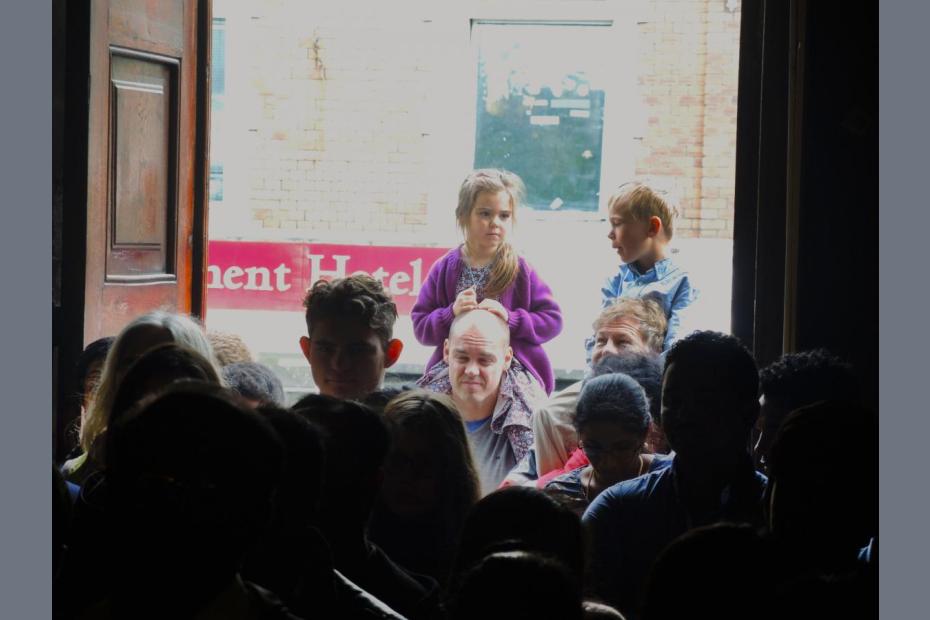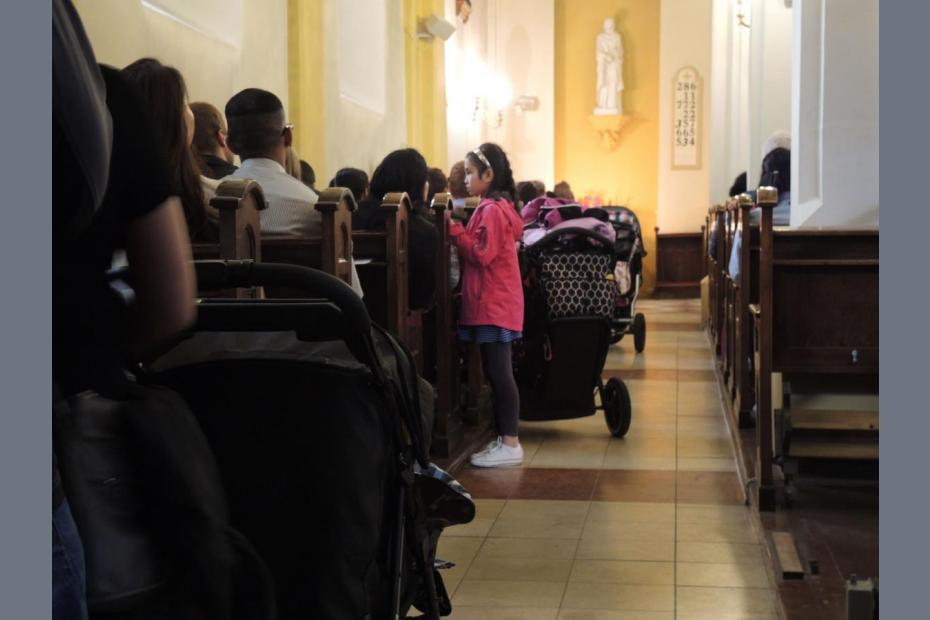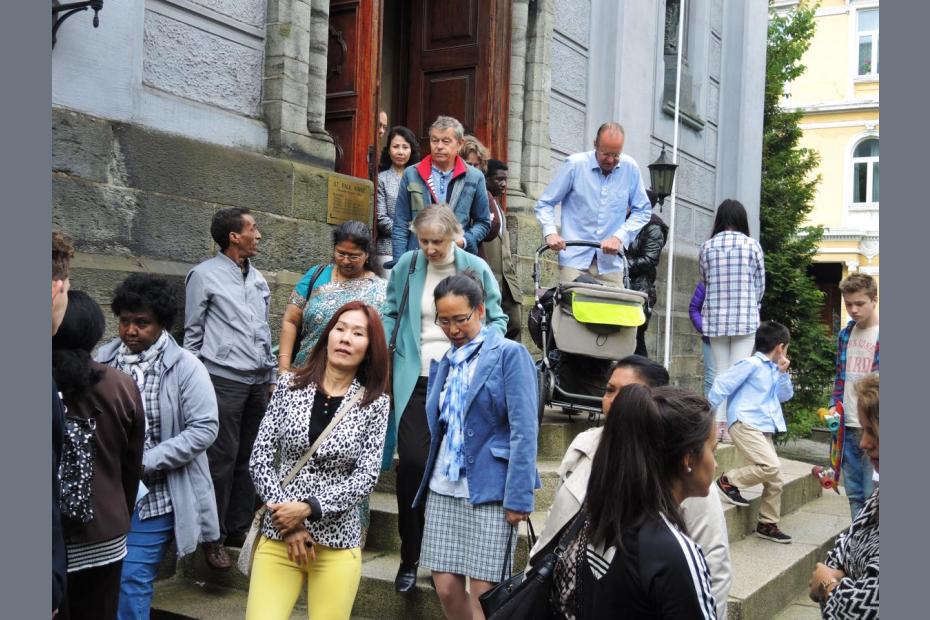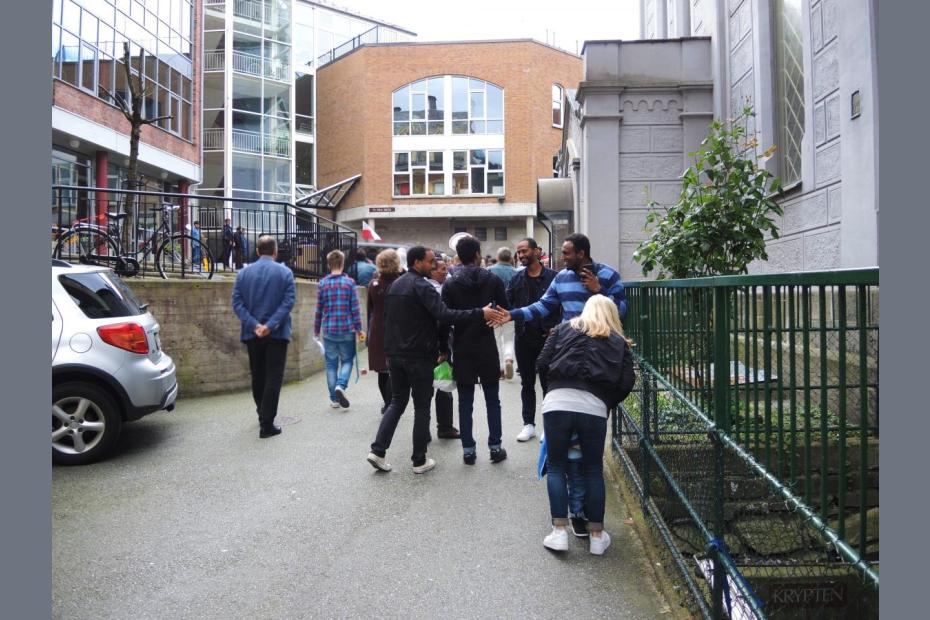Catholics in Bergen belong to a single, large parish, St. Paul’s. Its many Sunday liturgies aim to accommodate a very diverse array of parishioners, but also to bind them as one community, in a manner that is both Norwegian and Catholic. In a very large parish of 17,800 people, all the Sunday Masses were full of families and carriages.
The parish worships in Norwegian for the first two Masses each Sunday; alternates monthly between French, Tamil, Vietnamese, and Spanish at an afternoon liturgy; and celebrates two Polish and one English Mass on Sunday afternoons. Saturday evening Masses are in Latin and sometimes in Tagalog. Weekday Masses are in Norwegian, Tamil and Vietnamese.
The 11 a.m. Norwegian Mass is described by the parish as a “high” Mass. It is the Pauline (post-Vatican II) liturgy, celebrated with a great deal more pomp than is typical in most contemporary parish Pauline liturgies.1 A number of elements of the liturgy are in Latin (and the Kyrie is in Greek) rather than Norwegian, and some parishioners said that this functions to give the liturgy more of a “universal” feel that unites a polyglot community. Hymnody is an especially important aspect of this liturgy, a bridge between Catholic and Norwegian traditions. Taken together, many liturgical elements and the choral music give a traditional feel to the liturgy, but there are also important elements, like the presence of altar girls, that were not traditional.
The English Mass had more contemporary and celebratory quality, with a synthesizer as the primary instrument. Filipinos were prominent in the choir, and gather after Mass for meals and celebration, as they do in many countries. Some interviewees said that they feel more at home in this liturgy and find the openness and celebration very refreshing. Others, including some Norwegian converts, said that they found this style of music hard to deal with.
Some longtime Catholics over age 50 expressed disappointment that the parish had shifted from being outwardly focused, i.e. with a mission to change and improve the world, to being more inwardly focused on liturgy and piety. As one said, “The church has too much reduced the meaning of church to liturgy. Of course the liturgy is important. But the Catholic Church without a very strong emphasis on social service – Caritas work, for the common good — without very strong interest in Jesus... We don’t have a lack of priests. We have too many of them. The church should be far more than liturgy. Liturgy, yes, but catechism, education, to be the salt of the earth.”
- 1Normally the term “high” Mass is reserved for Tridentine Latin liturgies. Here it seems to refer to the style and pomp of the liturgy.






